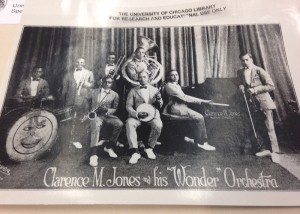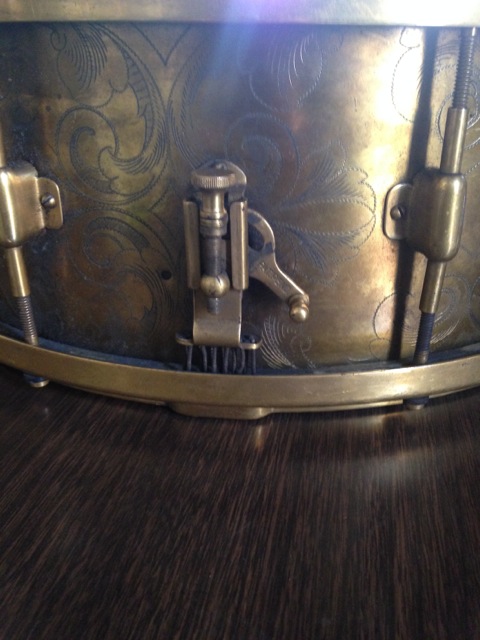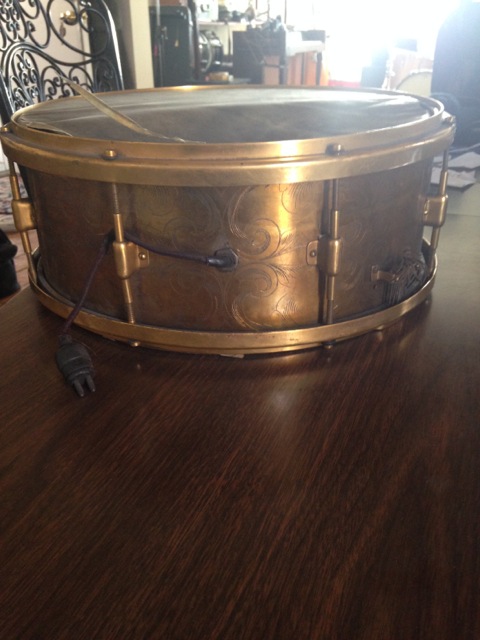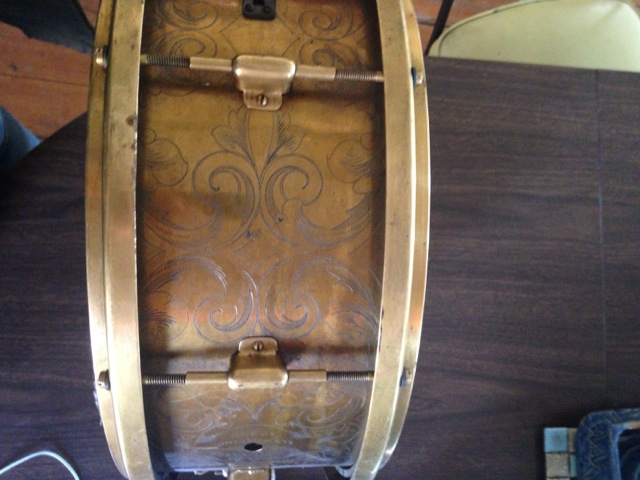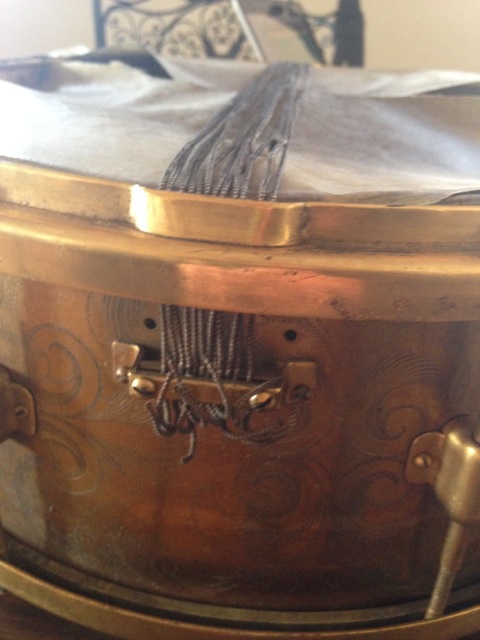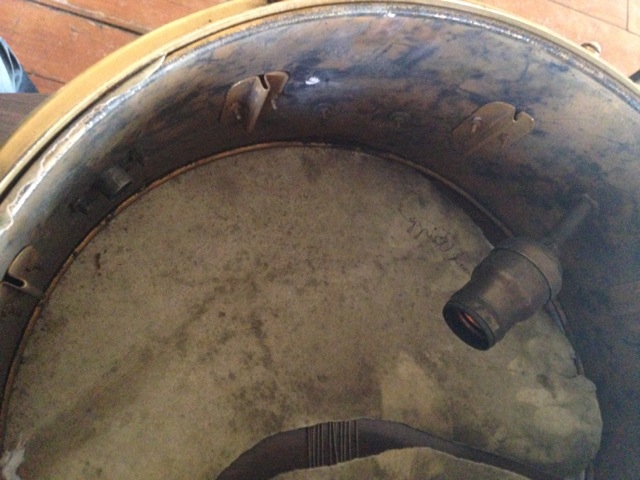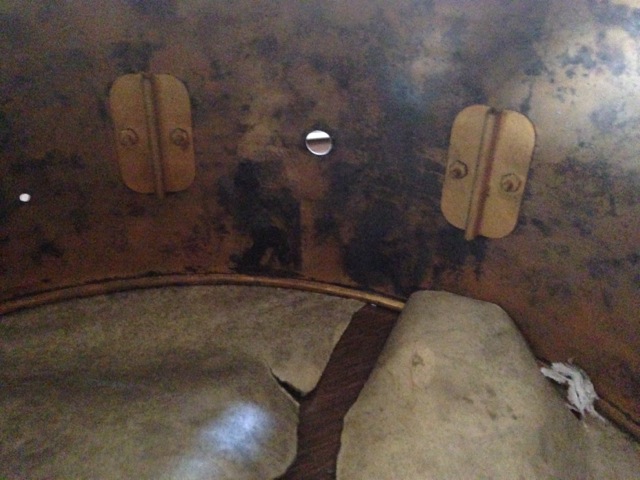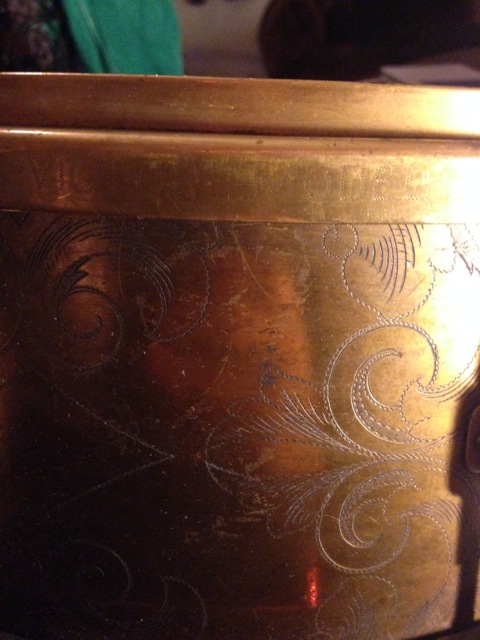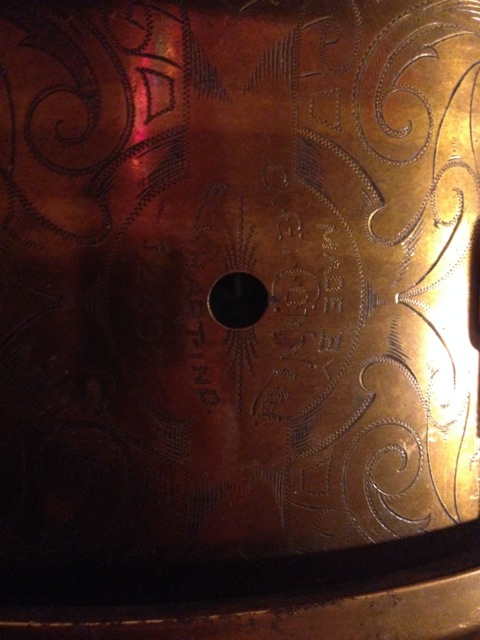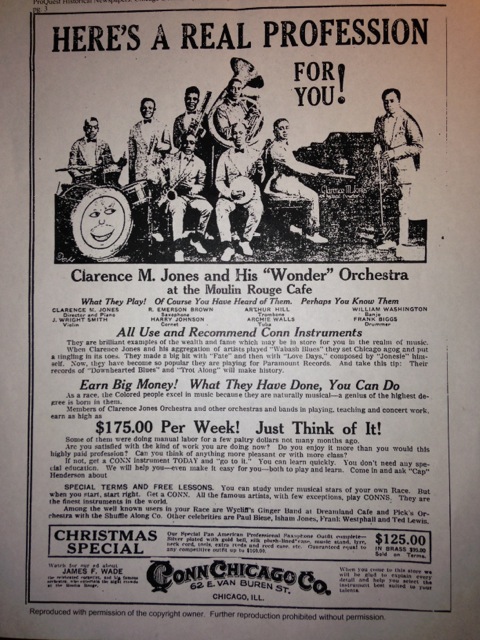Hi All,
This is my first article on NSMD. I’m a drummer in Chicago and happened upon what turns out to be quite a cool drum.
Here’s the story: I was checking out a local vintage clothing/thrift shop in my neighborhood a few months ago. I saw this beat up looking old metal drum sitting on a corner shelf. At first I thought it was possibly an old antique toy drum for a child, but up close I saw that it was a Conn. I was more interested but was still thinking to myself if it was a Ludwig or something maybe I’d buy it (I didn’t know too much about Conns.) Then I noticed all the cool engravings including one that read “Frank Biggs 1923.”
So, I thought I better at least google Frank Biggs. It turns out Biggs was a popular jazz drummer in Chicago in the 1920s onward..He is credited as writing “That’s When I’ll Come Back To You” recorded by Louie Armstrong’s Hot Seven. There are some articles and announcements of him playing at different Chicago Jazz hotspots, etc... including a great ad for Conn from 1922 with his photo in it (maybe that’s the drum?)
So, the jazz buff in me wanted that drum just for the cool story behind it. It’s always cool to find out where an old instrument came from. I went right back and bought it for not a whole lot of money. My initial thoughts were to restore it, play it, and bring it back to life.
On to the drum itself, this past week I contacted Adrian Kirchler, Harry Canangy, and Mike Curotto. All of whom shared their expertise with helping me further identify this drum. Turns out it’s a custom made, custom engraved gold plated Conn Victor Model. A real “gem” as Adrian called it, a one of a kind. And while it’s not a Leedy, Ludwig or Slingerland, it’s really a neat piece with a cool connection to early Chicago jazz. Maybe not the best idea to take out on various gigs?
There’s a bulb fixture still in tact, all the lugs, rims, and shell are in great shape, actually. Also, Frank Biggs signed his name backwards on the inside of one of the heads presumably to illuminate his name through the bulb. It’s still completely legible.
There are some extra mounting holes by the strainer. There’s a higher end Ludwig strainer on the drum. The question Adrian had was whether or not Biggs ordered the drum with the better strainer or had the standard utility model removed and replaced it with the better Ludwig. An interesting thought…
Well, enough words, here are some pics:
Hope you all enjoy the drum. Feel free to email me if you have any more info, fun facts, etc... Jbatchko@hotmail.com. Again I’d like to thank Adrian, Harry, and Mike for their great help. And to Chicago pianist/sleuth Steven Heliotes for finding all the interesting info on Frank Biggs. And thanks, George.
Cheers, Jason

